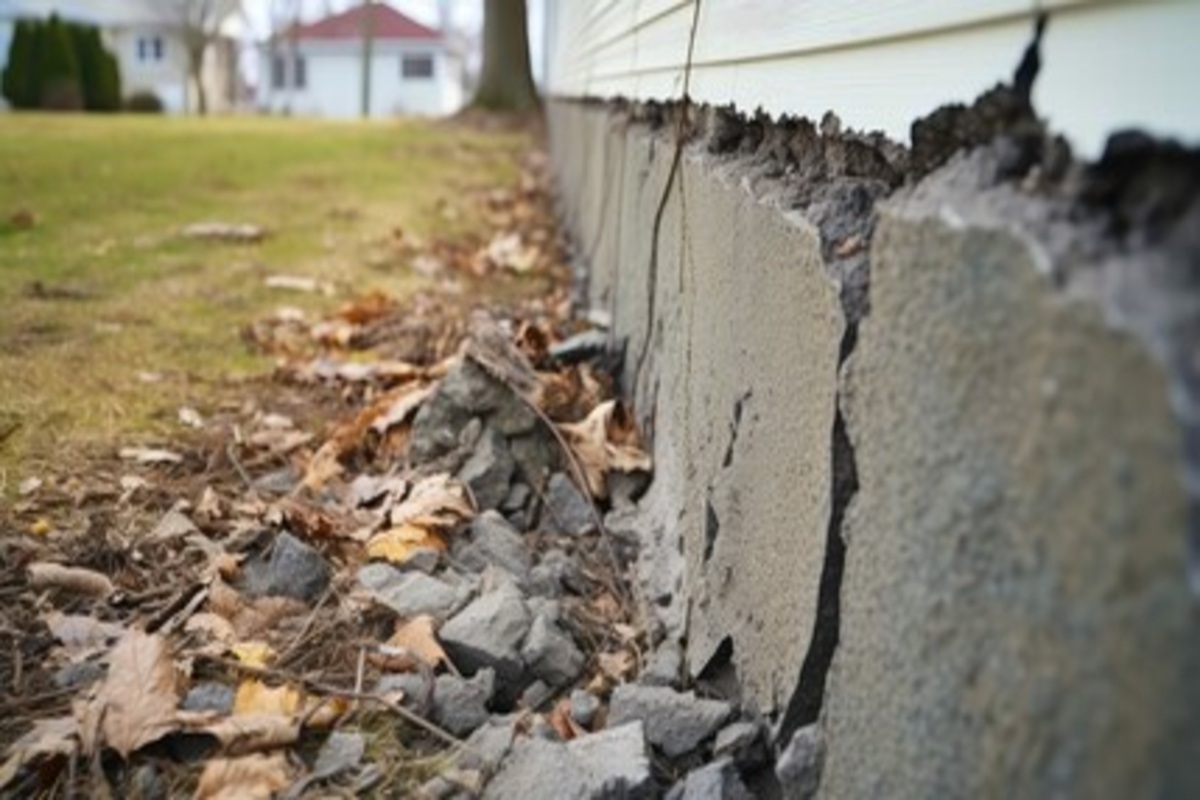Slab foundations can shift over time due to soil movement, moisture changes, or poor construction. If you need to repair a floating foundation, full replacement is not always necessary. Many issues can be resolved using proven techniques that restore stability and prevent further damage.
This post explains the common signs of floating slab problems, how contractors evaluate the damage, and the most effective repair options, such as slabjacking and polyurethane injection. We also outline when to involve a foundation expert and what to expect during a professional inspection.
Signs Your Floating Foundation May Need Repair
Understanding the symptoms of a failing floating slab can help you catch problems before they become more severe. Here are a few signs to look for:
- Cracks in the basement slab or garage floor
- Gaps between the floor and baseboards
- Interior doors sticking or not latching
- Cracks in drywall above doorways or windows
- Uneven or sloping floors
If you’re seeing any of these, it doesn’t necessarily mean your home is unsafe. But it’s worth having a professional evaluation to determine the cause.
Can You Repair a Floating Foundation? Yes, And Here’s How
We get calls from homeowners wondering whether foundation repairs are even possible when there are no footings to work from. The good news is that floating foundations can be repaired using several proven methods, depending on what we’re dealing with underneath.
Slab Cracks and Minor Movement
If the issue is isolated to surface-level cracking from shrinkage or minimal shifting, we often recommend:
- Epoxy injection to seal non-structural cracks and prevent water from getting in
- Floor leveling compounds to smooth out minor uneven areas
These types of repairs are generally cosmetic but can stop moisture intrusion and prevent further cracking.
Structural Movement or Sinking
When the slab has dropped or is showing signs of serious movement, we take a different approach. In many cases, we use polyurethane foam or a technique called slabjacking (also known as mudjacking) to lift and stabilize the concrete.
- Polyjacking: We drill small holes through the slab and inject lightweight polyurethane foam underneath. As the foam expands, it lifts the slab back into place and fills any voids caused by soil settlement.
- Mudjacking: Similar process, but uses a heavier cement slurry. We use this in areas where added weight is beneficial.
These methods are highly effective for floating slab repair because they don’t rely on deep anchoring like pier systems. Instead, they address the root problem, unstable soil, by filling voids and restoring contact between the slab and the ground below.
When Is It Time to Call a Professional?
Not every crack or slope means your home is in danger, but foundation issues don’t fix themselves. If you’re unsure whether you need to repair a floating foundation, it’s better to schedule a consultation than to wait.
We always start with a thorough inspection. Our team evaluates the type of cracking, the condition of the slab, and the soil under and around your home. Based on what we find, we’ll recommend the most cost-effective solution that makes sense for your situation.
Factors That Affect Floating Foundation Repair Options
Every home is different, but here are a few key factors that influence the repair approach:
Soil Conditions
If the soil under your home holds too much moisture or has a history of expanding and contracting, it may need stabilization.
Access Points
Because floating slabs don’t have footings, we sometimes need to create additional access to work underneath. Fortunately, the equipment we use is compact and minimally invasive.
Water Intrusion
If water is contributing to the soil movement, we may recommend exterior drainage improvements or a sump pump system to manage moisture long-term.
How We Help Homeowners Protect Their Investment
We’ve seen firsthand how frustrating it is for homeowners to deal with foundation cracks or sloping floors, especially when there’s uncertainty about the cause. That’s why we take the time to explain your options and walk you through the repair process step by step.
In many cases, the repairs are less invasive and more affordable than people expect. We aim to deliver results that not only stop the current damage but also reduce the risk of future issues.
Schedule a Free Foundation Inspection
If you suspect problems with your floating foundation, don’t wait for them to get worse. Contact us at KC Pier for a free inspection and honest recommendation. We’ll assess your home, explain your options, and help you find the best path forward, whether it’s a simple crack seal or full slab stabilization.
Let us help protect your home and restore your peace of mind.

